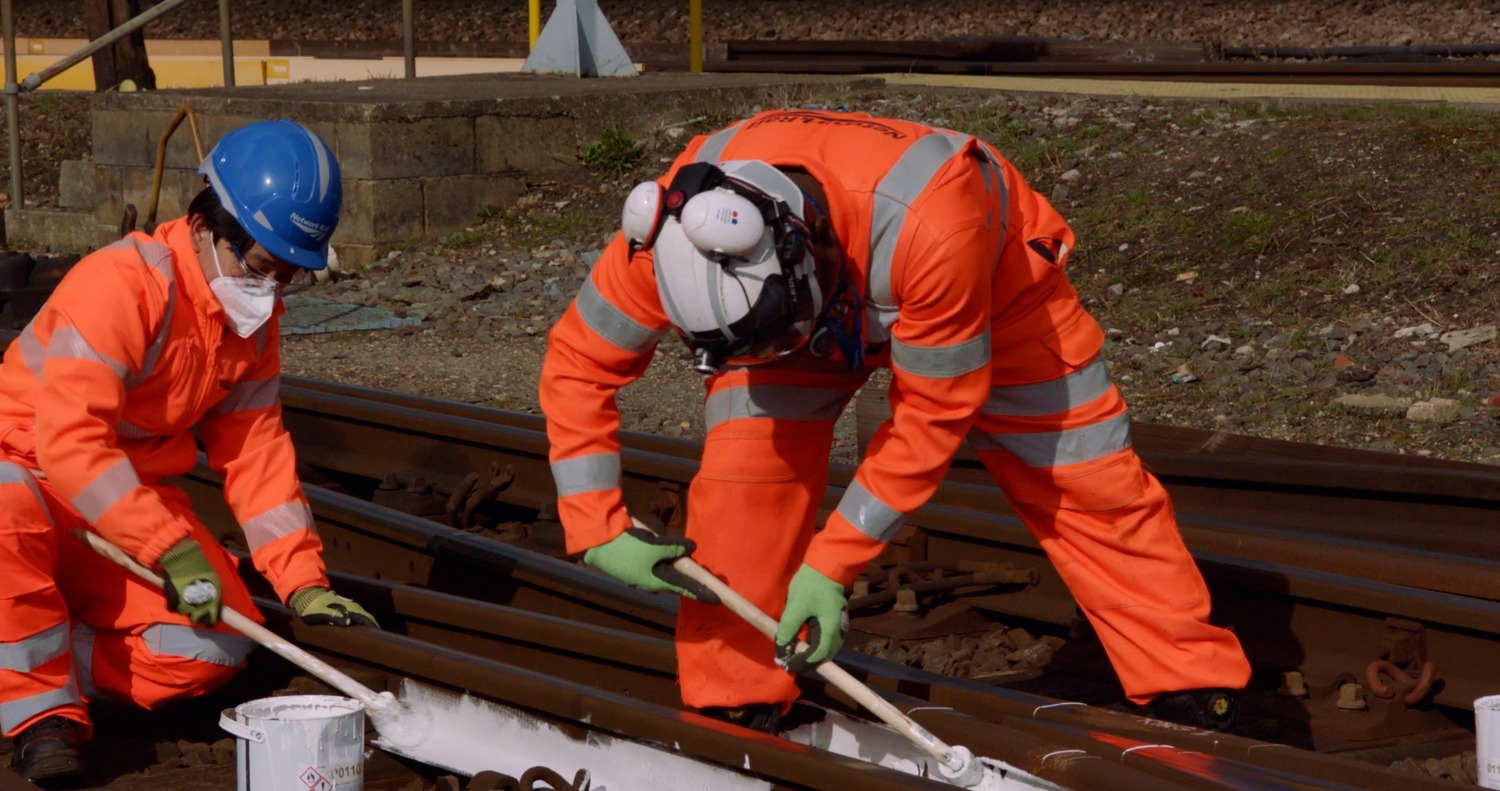
APPROXIMATELY 1,500 litres of white paint is to be applied to sections of the UK rail network to keep passengers moving in very hot weather, Network Rail has revealed.
Over 240 days (350,006 minutes) of delays for passengers were caused last year due to buckled rails brought on by hot weather.
Hundreds of Network Rail workers armed with brushes, rollers, and white paint will now take to tracks across the UK to prepare the railway for the hot months ahead. The organisation explained that a ‘simple lick of paint’ can go a long way, with the white paint helping to reflect the sun’s rays and reduce overheating and deformation.
Britain’s network has thousands of miles of track and in a summer heatwave, rails in direct sunshine can be as much as 20°C hotter than air temperature. As rails are made from steel, they expand as they get warmer, and can start to curve – otherwise known as ‘buckling’ which can lead to disruption for passengers. Typically, a rail painted white is 5°C to 10°C cooler than one left unpainted.
Alongside painting sections of rail white, Network Rail works closely with specialist weather forecasters and local weather stations to make necessary plans and take action so rails are less likely to buckle. This includes checking track stability each winter, as part of ongoing maintenance, and strengthening weak parts. Meanwhile, probes have been installed on certain parts of the network to alert when track temperatures rise. When very hot weather is forecast, train speed restrictions are introduced resulting in less force on the rail.
Lisa Angus, industry weather response director at Network Rail said, “Soaring temperatures on the railway can put a huge amount of pressure on our infrastructure. With extreme weather events becoming more frequent we’re working hard to keep passengers moving through the summer months ahead.
“Last year we announced plans to invest £2.8 billion over the next five years to make the network more resilient to the issues caused by climate change; helping to keep our railway safe, improve performance and minimise disruption.”









